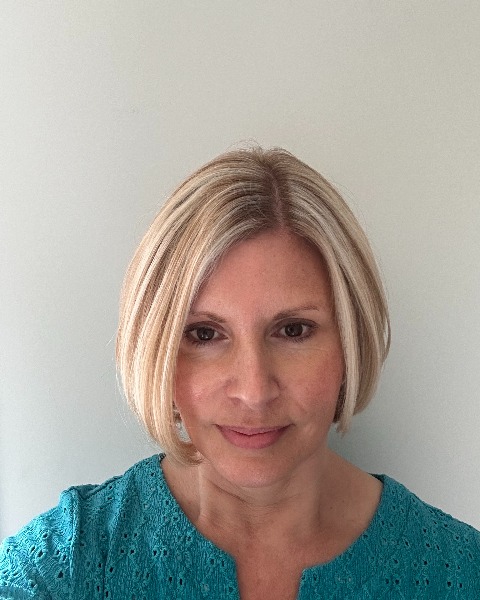Education/Quality Improvement
(10.06) Facilitating Learning and Creating Practice Change: Improving Vaccine Coverage in Adults with Diabetes
Friday, May 10, 2024
10:50 AM - 11:05 AM CDT
Location: ePoster Showcase, Empire Ballroom Foyer, Level 2

Elizabeth A. Lepkowski, MA, MATD (she/her/hers)
Chief Learning Officer
AACE
Jacksonville, Florida, United States
Submitter(s)
Objective : In 2022, AACE began working in an education and quality improvement collaborative with six other subspecialty societies in a Centers for Disease Control and Prevention-funded grant coordinated through the Council for Medical Specialty Societies to help increase COVID-19, influenza, and routine vaccinations in high-risk adults with chronic medical conditions. AACE’s goal is to improve vaccine coverage among adults with diabetes. This five-year grant involved creating and disseminating education for the endocrine care team and supporting seven health systems with quality improvement intenventions.
Methods: AACE developed a comprehensive framework, informed by multiple learning and change models, for its work on the grant to guide the creation of educational offerings and communications. AACE aligned its tactical efforts with PRECEDE components (predispose, enable, reinforce) of Green and Kreuter’s PRECEDE-PROCEED Model and stages of physician learning and change, as identified by Fox, Mazmanian and Putnam, and depicted by Moore, Green and Gallis.
Results: This unique framework and the integration of communication tactics with educational offerings in the framework allows AACE to leverage multiple media resources including social media, website content, podcasts, webinars, in-person activities, provider tools, and patient education materials towards a uniform goal. No single activity, tool, resource or post is considered as a separate and individual agent of change. Rather, each has a role to play in the process of helping endocrinologists and endocrine care team members recognize they have a need to learn and then supporting them through the learning and change process with appropriate and multiple resources and tools.
AACE has been able to quantify the equivalent of “participation” in educational activities with “engagement” based on social media impressions and number of materials downloaded from its website. AACE’s dedicated webpage has seen over 25,000 views, podcasts have been downloaded over 12,000 times, and immunization-focused videos have been viewed or downloaded over 400 times. Impressions on AACE’s social media have totaled more than 33,000. Each of these metrics is important as they help AACE know the impact the resources are having in building knowledge, a key step in the learning process. As AACE progresses further in phases of the grant, additional methods will be deployed to assess the impact of the use of materials in an endocrine practice.
Discussion/Conclusion: AACE’s use of a model-based framework addresses the need for continuing medical education providers to use more strategic and evidence-driven practices. The model is novel for a specialty society because membership organizations like AACE typically do not approach a specific health care quality gap with strategic, multi-year, multi-media efforts. AACE intends to use data collected throughout the grant to further refine its model, using quality improvement principles and practices. AACE’s continued use of the model, along with data-informed monitoring of its impact, can inform future efforts throughout the profession.
Methods: AACE developed a comprehensive framework, informed by multiple learning and change models, for its work on the grant to guide the creation of educational offerings and communications. AACE aligned its tactical efforts with PRECEDE components (predispose, enable, reinforce) of Green and Kreuter’s PRECEDE-PROCEED Model and stages of physician learning and change, as identified by Fox, Mazmanian and Putnam, and depicted by Moore, Green and Gallis.
Results: This unique framework and the integration of communication tactics with educational offerings in the framework allows AACE to leverage multiple media resources including social media, website content, podcasts, webinars, in-person activities, provider tools, and patient education materials towards a uniform goal. No single activity, tool, resource or post is considered as a separate and individual agent of change. Rather, each has a role to play in the process of helping endocrinologists and endocrine care team members recognize they have a need to learn and then supporting them through the learning and change process with appropriate and multiple resources and tools.
AACE has been able to quantify the equivalent of “participation” in educational activities with “engagement” based on social media impressions and number of materials downloaded from its website. AACE’s dedicated webpage has seen over 25,000 views, podcasts have been downloaded over 12,000 times, and immunization-focused videos have been viewed or downloaded over 400 times. Impressions on AACE’s social media have totaled more than 33,000. Each of these metrics is important as they help AACE know the impact the resources are having in building knowledge, a key step in the learning process. As AACE progresses further in phases of the grant, additional methods will be deployed to assess the impact of the use of materials in an endocrine practice.
Discussion/Conclusion: AACE’s use of a model-based framework addresses the need for continuing medical education providers to use more strategic and evidence-driven practices. The model is novel for a specialty society because membership organizations like AACE typically do not approach a specific health care quality gap with strategic, multi-year, multi-media efforts. AACE intends to use data collected throughout the grant to further refine its model, using quality improvement principles and practices. AACE’s continued use of the model, along with data-informed monitoring of its impact, can inform future efforts throughout the profession.
